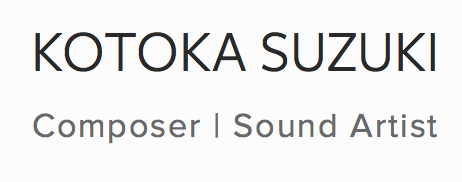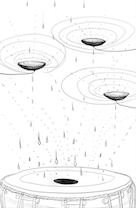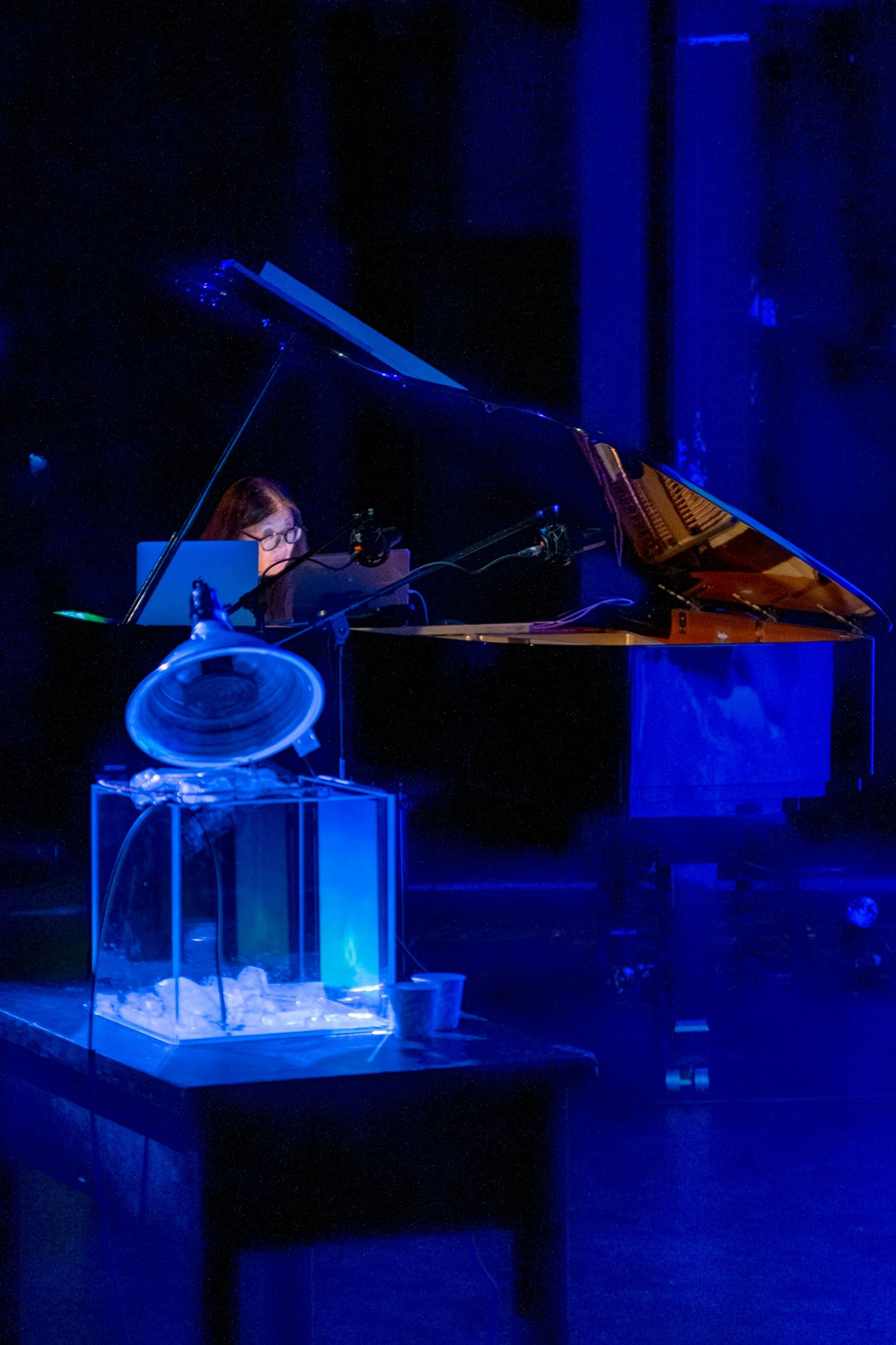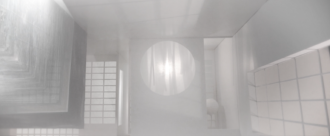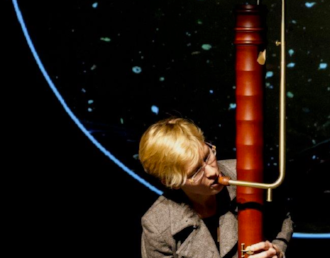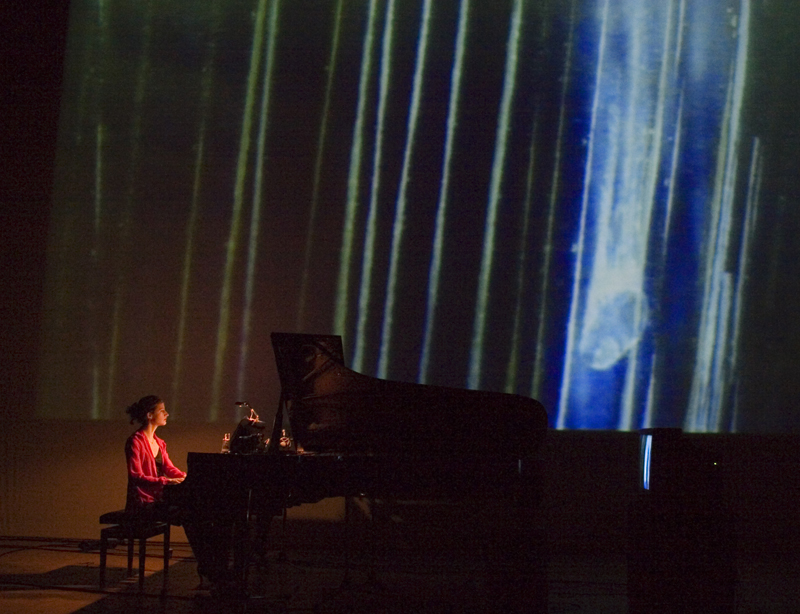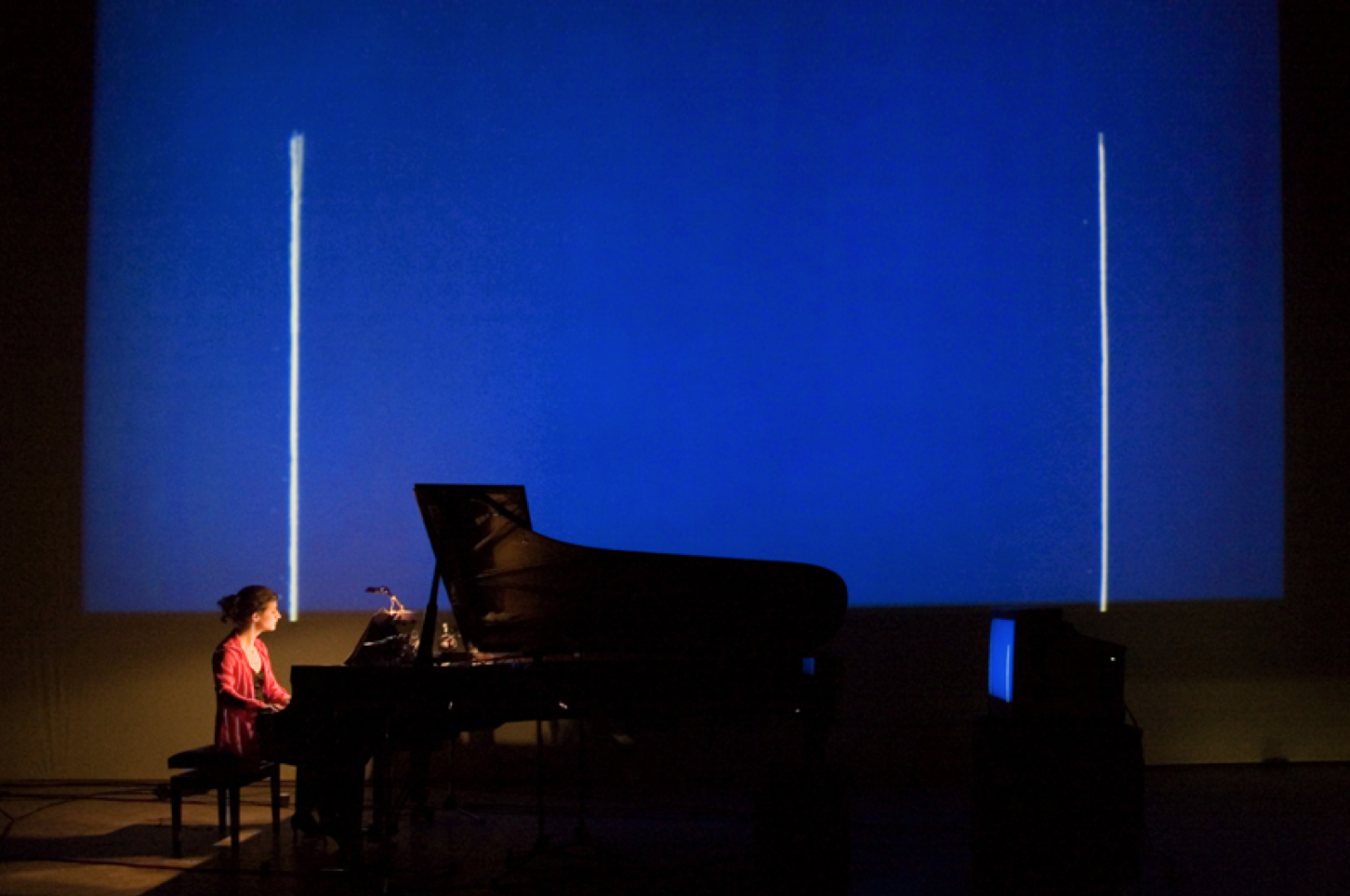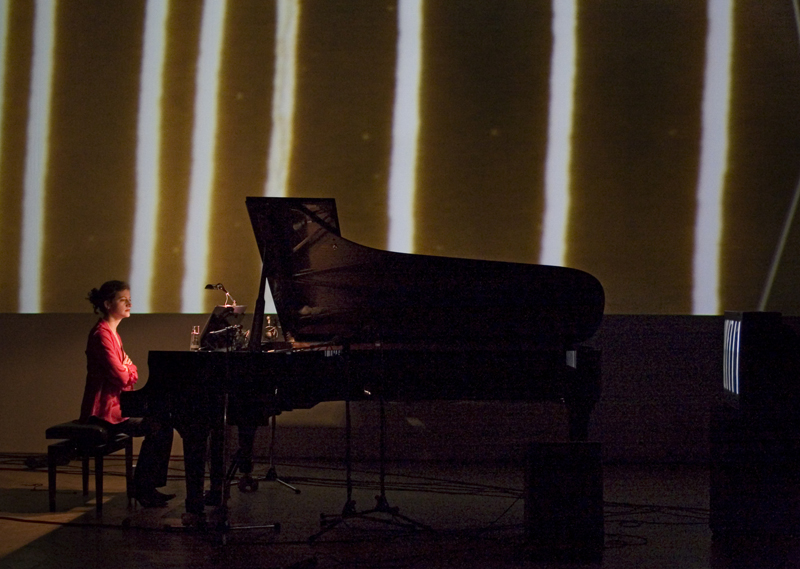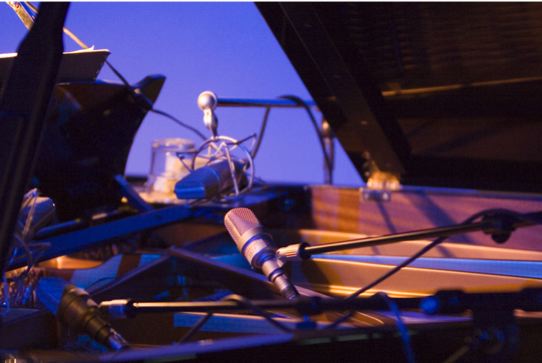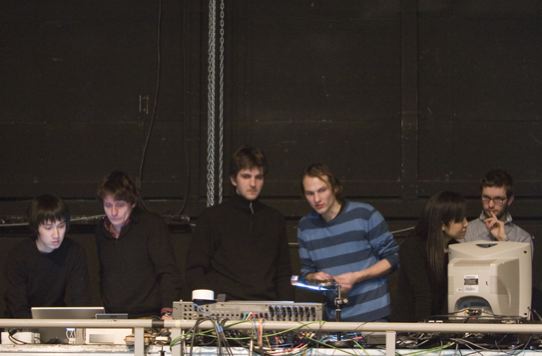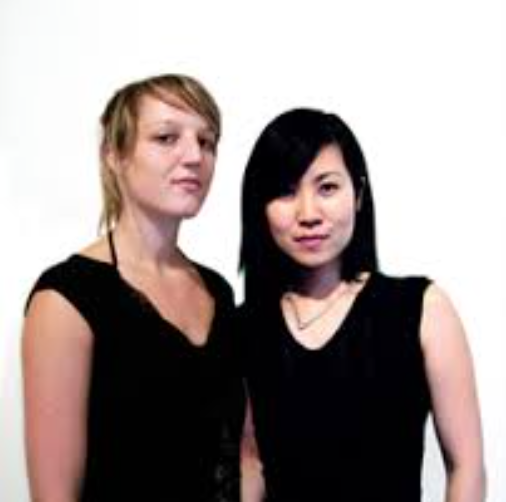//SOLO
Delicate Anticipation | 15’00”
percussion, lights and fixed electronics (2023/25)
commissioned by Michael Murphy
premiere: Array Music Space (Mar. 20, 2025)
premiered by Michael Murphy
This work is written as part of the musical series, “In Praise of Shadows”. The work in the series is inspired by Junichiro Tanizaki’s essay, “In Praise of Shadows” (1933) written at the birth of the modern era in imperial Japan. The essay describes the ways in which shadows and negative space are integral to traditional Japanese aesthetics in music, architecture, and food, right down to the design of everyday objects. As Tanizaki explains, “We find beauty not in the thing itself but in the patterns of shadows, the light and the darkness, that one thing against another creates… Were it not for shadows, there would be no beauty.”
In the third part of the sequence, “Delicate Anticipation,” written for a solo percussionist, electronics, and lights, shadow is the central focus, honouring the “patterns of shadows, the light and the darkness, that one thing against another creates”. Positioned behind the scrim, the percussionist is only visible as a shadow while performing with lights and instruments of primarily metal and skin, as they manipulate patterns of carefully choreographed shadows. The title derives from the English translation of the essay, describing the sensation as one gazes at the silent liquid in the dark depth of a Japanese lacquerware bowl. As Tanizaki writes, “What lies within the darkness one cannot distinguish…. …the fragrance carried upon the vapor brings a delicate anticipation.”
This work was commissioned by and written for the percussionist, Michael Murphy.
Warm-Pulse-Rain | 12’30”
tabla, transducers and electronics (8-channels) (2024)
commissioned by New Music Concerts
premiere: Future Resonance Festival (Apr.27, 2024)
premiere by Durpreet Chana
The interactions of electronics and tabla in this work is motivated by the idea that the tabla is often referred to as "the talking drum” —two drums in dialogue with one another, other musicians, and the audience. These interactions are enhanced by placing multiple transducers on various resonating surfaces surrounding the performer; these sounds disperse, resonate, and converse in various timbres and directions, at times, replicating the textures of a falling rain.
The improvisation and the onomatopoetic nature of the language of the tabla serves as an additional source of inspiration for the Warm-Pulse-Rain. Classical tabla is learned through speaking and memorization; its vocabulary includes syllables with embedded meanings (stroke, intonation, and other ‘rules’) which are combined to create different meanings. Using a guided graphic score that includes tabla’s spoken structures accompanied by a vertically oriented illustration depicting a falling rain, the work invites the musician to interpret and develop their own rhythmic cycles and patterns.
This work was commissioned by the New Music Concerts and dedicated to Gurpreet Chana.
Vista | 14’00”
piano, video, electronics and ice (2022)
commissioned by Megumi Masaki
video: Antonia Contro
animator: Joseph Merideth
premiere: Northern Arts and Cultural Centre (Oct. 20, 2022)
premiere by Megumi Masaki
Vista is a work created in collaboration with the visual artist Antonia Contro that addresses the consequences of climate change in the Arctic. Scientists, along with conservation organizations, such as the Wildlife Conservation Society (WCS) Canada, have been closely monitoring the changing underwater soundscape of the Arctic using hydrophones. These audio recordings provide information on how increased open water in the Arctic, together with rising noise levels from a growing human presence, are significantly affecting underwater soundscapes and natural habitats. Mammals listen to each other and use sound to sense their habitat and detect both predators and prey. Finding more open water in the Arctic sea, mammals are increasingly moving from the subarctic to the Arctic and are doing so earlier in the season. Increased open water also increases noise levels and allows for increased human activity in the Arctic region. With permission from the Western Arctic Program conservation team at the WCS Canada (Conservation Scientist/Arctic Acoustic Program Lead, William D. Halliday), the work directly incorporates sounds from their audio archive.
Blue, Rising | 8’30”
piano and transducers (2019)
commissioned by Cheryl Duvall
premiere: Canadian Music Centre (Jan 16, 2020)
premiere by Cheryl Duvall
Inspired by existing iconic piano works depicting the motion of water and oceans, this work quotes composers of the past such as Debussy, Ravel, and Liszt. Through a series of small surface transducers placed directly on the strings of the piano, sounds are projected directly from inside the instrument. In doing so, the instrument becomes a symbolic reference to the past not only through the musical gestures performed by the pianist but also through the emerging sounds, quoted from the past that flood out of the instrument. Furthermore, specific frequencies are projected from the transducers to excited the harmonic partials of particular strings. This work was dedicated to Cheryl Duvall and commissioned by the pianist.
Utterance in Motion | 9'00"
clarinet, video & electronics (2018)
commissioned by Robert Spring
funded by Selmer Paris & HIDA Project Grant
premiere: ClarinetFest, Ostend, Belgium (July 7, 2018)
premiere by Robert Spring
video/animation: Claudia Rohrmoser
set Design: Nicola Minssen
“Utterance in Motion” is inspired by the impact of grief and the process of overcoming it. The experience of loss is painful, but it can also be an enlightening and perhaps beautiful journey. Through the physical expressions of grief, the work explores the language of sorrow. This work was commissioned by the clarinetist Robert Spring and funded by Henri Selmer Paris and an HIDA Project Grant from Arizona State University. The work was premiered at Clarinet Fest in Ostened, Belgium in July 2018 by Spring. The accompanying video/animation was created by Claudia Rohrmoser with set design by Nicola Minssen.
The Excess | 7’00”
sub-bass & sopranino recorders and electronics (2017)
commissioned by UMS'n JIP
premiere: Zeughaus Kultur, Brig-Glis, Switzerland (May 13, 2017)
premiered by Ulrike Mayer-Spohn
This work takes a close look at the relationship between the physical body of performers and their wind instruments. I am particularly interested in how sound is produced as an extension of human breath and is voiced through these instruments. Both conscious control and incidental and inadvertent breath allows the performer to affect the sound. Additionally, the size of the instrument is in direct relationship to the amount of air needed to power the instrument. These relationships are visually pronounced by using one of the largest against the smallest instrument in the modern recorder family.
Shimmer, Tree | In Memoriam Jonathan Harvey | 15'00"
piano and electronics (2014)
commissioned by Ayaka Isono
premiere: Constellation, Chicago, IL (May 7, 2014) Pianist.
I. Like a gentle wind
II. I count the fleeing hours
This two-movement work is written in memory of the British composer, Jonathan Harvey (1939-2012). He was a deeply spiritual man and beautifully sensitive to the details surrounding him. I vividly recall a particular moment as we sat together conversing by a window on a sunny afternoon in California. In the middle of his sentence, he paused and looked outside the window, mesmerized by a tree as its leaves gently swayed in the wind. He then softly said, “Do you see how beautifully that tree is moving?”. The first movement depicts the image of this moving tree. The second movement is inspired by his seminal work “Bhakti,” in which he masterfully blends acoustic instruments with computer-generated sounds. Harvey investigated electronic and digital sound synthesis in far greater depth than any of his contemporaries. This movement attempts to achieve this unity using fixed-media electronics.
Listen-->
Order Score->
Breath in Quiet (2014) | 8'00"
violoncello and thread
commissioned by the McCormick Foundation
premiered by Russell Rolen, cello
Constellation, Chicago, IL (May 7, 2014)
Breath is a simple gesture. Made without consciousness, it contains subtle changes that can have tremendous meaning. This work is inspired by the conceit that subtle differences can be contained in the same gesture. Shifting in sonic color and rhythm, “Breath in Quiet” transforms throughout the duration of the composition. This piece was written for the cellist Russell Rolen from the Spektral Quartet.
Reservoir (2013/rev.2016) | 9'40"
voice and electronics (24-channels)
commissioned by UMS'n JIP (Switzerland)
funded by Canada Council for the Arts
supported by Center for Art and Media (ZKM), Karlsruhe, Germany
premiered by Javier Hagen, voice
Kunitachi Art University, Tokyo, Japan (May 2014)
During my three-months residency at the Center for Art and Media (ZKM) in Karlsruhe, Germany in the winter of 2013, I conducted an intensive research into the electronic portion of this work. The work explores the relationship between timbre (water and a bell) and space in a virtual and spatialized listening environment: 24 speakers in a sound studio that allow individual and simultaneous positioning of sound in the space. The work imagines gentle drips of water and bells that eventually swirl in full force as to create a feeling of drowning.
The texts for this work are taken directly from a web-blog I encountered during my residency. As I was reading an online article about the suicide case of Amanda Todd in British Columbia, I noticed a link to a suicide blog. It was no surprise that such blog exists. But the page I was directed to was a blog from an anonymous asking for suggestions for good locations and most effective ways for drowning oneself. To my surprise, several members had responded with disturbingly detailed descriptions in frank manner with notes of encouragements. When I returned to this site again one week later, the page was removed due to an explicit content as if it had never existed.
I believe we can all relate to some extent about being lost at some point in our lives. Some lose the strength to fight to find the right answers. This work is about such tragic story. It is a story of lost, longing and hope, like the anonymous wandering in my mind in a form of a ghost searching for his soul. The texts for this work are lines and words taken directly from the blog in different orders.
While Ripples Enlace... (2010) | 8'25"
alto recorder and electronics
commissioned by the Magdeburger Miskverein d.V.
funded by the Canada Council for the Arts
premiered by Lucia Mense, alto recorder
Magdeburg Telemann Festival, Germany (March 2014)
Inspired by the composer George Phillipp Telemann, this piece takes some of the materials from my favorite work by this composer: the "Hamburger Ebb' und Flut", also known as the "Water Music", which consists of dance suites that are each based on figures from Greek Mythology. The melancholic melodic lines of the 4th movement ("Der Verliebte Neptune") and the beautiful, longing underlying harmonic progressions and seamlessly flowing and light melodic lines of the Overture are used as the main foundations in my work. Throughout the work, materials from "Hamburger Ebb' und Flut" subtly come to surface as ripples of sound change form.
Resonans campanis (2009) | 6'00"
organ solo
commissioned by The University of Chicago
premiered by Tom Weisflog, organ
Rockefeller Chapel, Chicago, IL (Oct 9, 2009)
This work was composed to commemorate the 500th Convocation in Rockefeller Chapel at The University of Chicago.
The piece was written for and premiered by Tom Weisflog.
Fixed (2005/rev. 06) | 10'30"
contrabass flute and live-electronics
commissioned by Beate Gabriella Schmitt
premiered by Beate Schmitt, contrabass flute
BKA-Theater, Berlin, Germany (Mar 2005)
This piece focuses on the delicate sounds of key-clicks. The metallic timbral qualities of these sounds are enhanced by pressing the keys with a metallic surface. All computer-generated sounds in this work originate from the live flute sounds: they are recorded, manipulated, and played back in real-time by the computer.
Piano Con Moto (2007) | Ca. 14'18"
piano, live-electronics and video
commissioned by Heather O'Donnell / Piano Optophonique Project
funded by DAAD | Canada Council for the Arts
“Piano Con Moto,” for piano, video, computer music, and three computers (live visual and audio processing), revisits a topic that captivated a generation of artists during 1910s and 1920s: the possibilities for synthesizing two divergent media into one artistic expression to create a new art form. Alexander Scriabin and Vladimir Baranoff-Rossiné used a type of piano capable of navigating between audio and visual realms: Scriabin imagining a “Tastiera per Luce”, a color piano, for the performance of his “Promethée”; Baranoff-Rossiné's “piano optophonique” projected light through painted and rotating glass plates, the colors and rhythms of which closely complemented the music.
Arising from this context, a pianist, video artist, composer, and a video programmer collaborate to create a work involving a temporal-visual element, bringing a fused expression of two components. This five-movement work creates a fused expression of musical and visual components. In this project, the pianist does not only manipulate both audio and visual elements during the performance, but is also asked to respond musically to these two components. The visual components are influenced by the sound parameters produced by the piano (amplitude, pitch/color, speed/rhythm, texture, etc.). Through the microphones placed near the piano, sounds are recorded, transmitted, and processed in real-time, and then simultaneously re-calculated and applied to various visual parameters (hue, color, speed/rhythm, saturation, brightness etc.). Within a given set of restrictions, the pianist is instructed to react to both the music she hears and the images she sees during the performance. Moving images thereby serve as a second kind of musical score.
This work was written for Heather O’Donnell and was premiered at the Deutschland-Radio Ultraschall Festival in Berlin, Germany in January 2007. The work received funding from the Austrian Federal Chancellery, The Canada Council for the Arts and from DAAD-Berlin. This work was premiered at Ultraschall Festival (Berlin, Germany) by Heather O'Donnell.
Claudia Rohrmoser, video
Rainer Kohlberger, video programming
Gerhard Daurer, audio programming
Heather O'Donnell, piano
Little Suite (2006) | 3'00"
flute solo
commissioned by Molly Barth
premiered by Molly Barth, flute
Willamette University, Salem, OR (April 2007)
Little Suite" (2006) was written for the virtuosic flutist, Molly Barth, as a going away gift as she headed for her new and exciting journey from Chicago to the West Coast. This piece contains moments of grace, happiness, and strength.
Hidden Voices (2003) | 9'20"
piano solo
commissioned by Renato Orara
premiered by Ingrid Purwins, piano
Lange Musiknacht Festival, Kunstakademie, Münster, Germany (July 2003)
This work for solo piano was commissioned by a visual artist Renato Orara (New York) in 2003. Several quotations of my favorite piano works from different composers and periods are embedded beneath this work; these elements are often concealed underneath other musical materials, but at times they emerge to the surface for a brief moment. A listener may or may not recognize these familiar elements or may simply imagine that one does.
The work received numerous performances throughout Canada, Italy and Germany by the pianist, Everett Hopfner, as part of the Eckhardt-Gramatté National Music Competition Winner's Tour, which he received in 2013. Audio recording of this work is commercially available through Signpost Records by the pianist and conductor, Rei Hotoda. More information is available on the Publications' page.
Slipstream (2002) | 10'50"
flute and electronics (7-channels)
commissioned by Sender Freies Berlin Radio (SFB)
premiered by Karen Bergquist Lüth, flute
Deutschlandradio-Ultraschall Music Festival, Berlin, Germany(Feb 2002)
I imagine sounds that are visible, constantly transforming into different forms, sizes, and colors, as they travel through the air at different speeds. the timbre of the tape material is based on my personal characterization of the flute: metallic, sensitive, fragile, light, and warm, but at the same time cool. these sounds from the tape are sometimes as small and gentle as grains of sand, and other times, as unyielding as a mass of metal. the transformations of both tape and flute take place as their sounds react to one another. the tape material reacts especially to the air pressure of the flute, as if the air emerging from the instrument physically blows away and breaks the tape sounds into small particles. at the same time, the traveling force of the tape material through the air causes the flute to react back.
This work was realized at Technical University of Berlin Electronic Music Studio. The work received the Musica Nova Honor Prize 2002, and was selected as a finalist in the Russolo Electroacoustic Music Competition 2002.
Sift (2001) | 11'11"
violin and electronics
commissioned by Music At The Anthology (MATA)
premiered by Carla Kihlstedt, violin
Angel Orensanz Center, Manhattan, NY (Jan 2001)
This piece conveys the relationship between two elements of sound: noise and pitch. These two elements are emphasized as separate voices by assigning each to an instrument: noise to tape and pitch to violin. Throughout this piece, the exchange and transformation of these elements can be heard. All computer-generated sounds are derived from the sounds of the violin used in this work. The violin sounds were manipulated and recorded for the music of the tape using CLM and Snd application programs.
Audio recording of this work is commercially available through Amazon.com. The recording is performed and released by the violinist, Eric Rynes through Albany Records. More information is available on the Publications' page.
